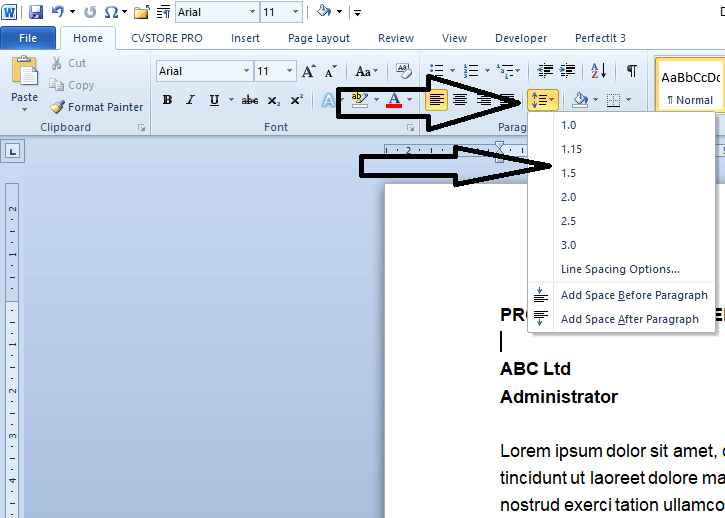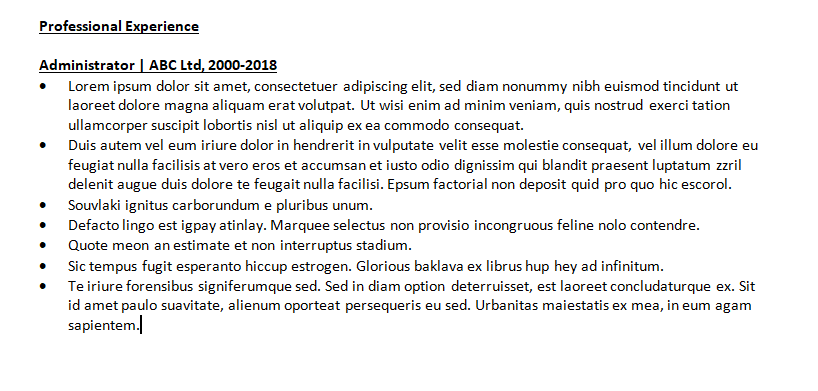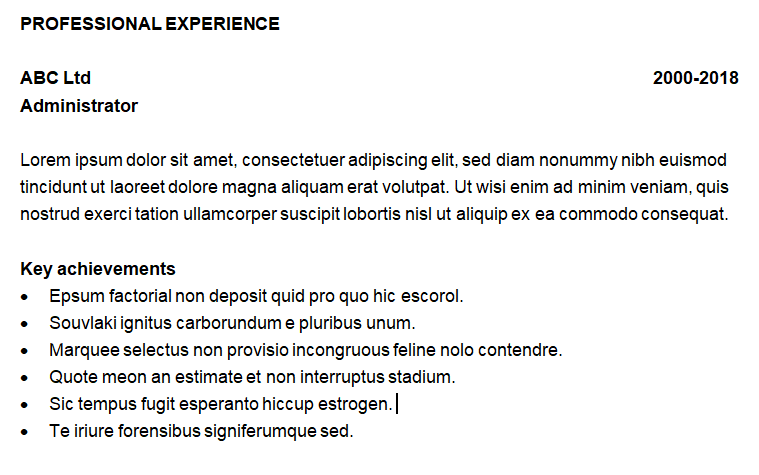Effective Use of White Space in a CV
When writing a CV, there are many important design decisions to make: How many pages? What font? Which keywords? However, the importance of white space is often overlooked. Although the majority of applications are screened by ATS where the design of your CV isn’t as important, you’ll still need to create an eye-catching and well-organised document likely to attract a human recruiter’s attention.
But what is “white space”? Put simply, white space (often referred to as “negative space” in design arenas) is an area of your CV that remains unused when separating sections and paragraphs of text.
There’s a fine balance between too much and not enough white space. Lack of sufficient white space can create a feeling of clutter and disorganisation, whereas too much can leave your CV feeling bare and lacking in content.
White space can help a recruiter’s eye be guided seamlessly through each section of your CV. Rather than having to wade through hundreds of words crammed into an A4 page, white space, combined with effective section titles, can help create focal points – resulting in text which is inviting to the reader. Research tells us that white space between paragraphs and in the left and right margins increases comprehension by almost 20%. Readers find it easier to focus on and process generously spaced content (Lin, 2004).
How to create white space in a CV:
Use Line Spacing
Microsoft Word allows you to increase line spacing between text. A simple adjustment here can significantly enhance the readability of your CV.

“Adjust the line spacing settings using Microsoft Word as shown in this image…”
Keep Bullet Points Short
We often talk about how your achievements should be listed in bullet point format in a CV. When doing this, try to limit each bullet to one line.
Be Consistent.
When listing jobs and qualifications, use the same format for company name, job title and date. Don’t keep switching between bold, italic and underlined text.
Play With Margins.
If you search online for the correct margin width on a CV, you’ll get multiple answers. No one answer is right. Consider tweaking margins to find what you feel looks comfortable.
I find that anything between .5 inches and 1 inch works well.
Avoid Leaving Pages Half-Filled
It sounds silly, however, a CV with a half-empty second page can foster doubt in a recruiter’s mind. Their first reaction will be “this candidate doesn’t have enough experience to fill the page”. If you find yourself going into a second or third page by only a few lines, consider reformatting everything slightly to reduce the number of pages.
Example of poor use of white space:

“A lack of white space here results in cluttered and hard to read text…”
Example of good use of white space:

“A few simple tweaks can significantly enhance typographic readability…”
The right balance between content and white space can make a surprising difference in a recruiter’s first impression of your CV. Design professionals use whitespace to create a “call to action” – an invitation to click on something. The same rule applies within a CV. Effective space between section headings, such as “Professional Experience” and “Education” can help the reader quickly and easily locate the details they need, with their call to action being, “shortlist”.

